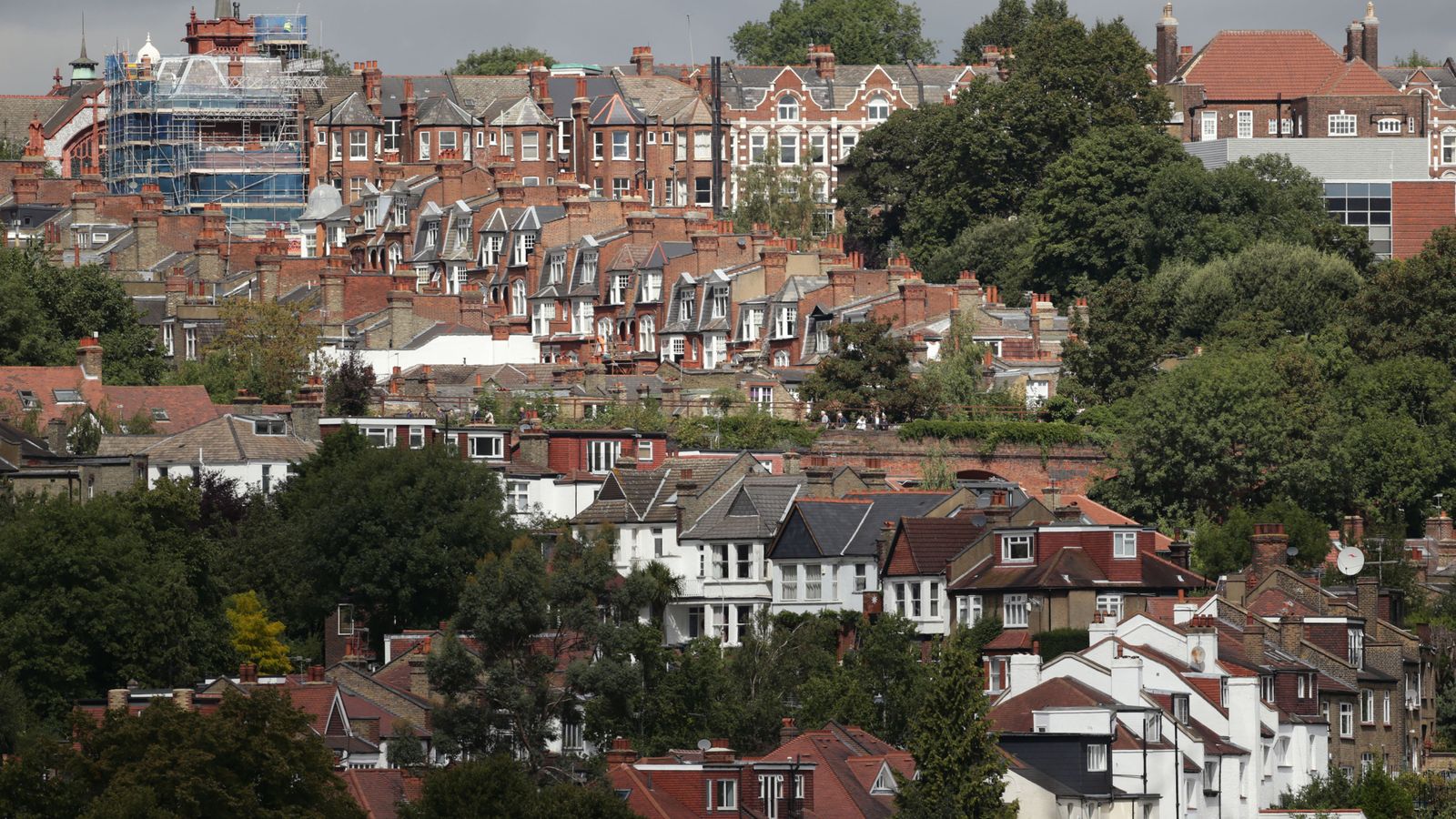Annual mortgage repayments are set to rise by £2,900 for the average household remortgaging next year, according to a think tank.
As the UK’s “mortgage crunch” deepens, total annual mortgage repayments could rise by £15.8bn by 2026, the Resolution Foundation said.
Prolonged inflation has raised expectations that the Bank of England’s base rate-rising cycle, which started in December 2021, will continue for longer than originally thought.
Rates are now expected to peak, in mid-2024, at nearly 6%, the foundation said.
Those higher expectations are moving through into mortgage rates, with deals being withdrawn from the market and being replaced by higher rates.
Data released by Moneyfactscompare.co.uk indicated that the average two-year fixed-rate homeowner mortgage was just below the 6% mark, at 5.98%.
The Resolution Foundation said it is expected that the average two-year fixed-rate mortgage will not fall below 4.5% until the end of 2027.
Tesco sees ‘encouraging early signs’ that grocery inflation is starting to ease
Revealed: The military personnel turning to food banks as cost of living crisis hits
Union calls on DVLA to provide free sanitary products amid cost of living crisis
This would significantly increase the scale of the mortgage crunch currently unfolding, it said.
Please use Chrome browser for a more accessible video player
Annual repayments are now on track to be £15.8bn a year higher by 2026 up from a projected £12bn increase at the time of the most recent Monetary Policy Report in early May, the foundation said.
Around three-fifths of this increase in annual mortgage payments is yet to be passed on to households, as borrowers move off existing fixed-rate mortgage deals on to new fixed-rates, up to 2026, the report added.
This is expected to deliver a rolling living standards hit to millions of households in the run-in to the next general election.
This year’s rate rises are also predicted by the foundation to increase the cost of a typical mortgage by 3% of typical household income this year – even bigger than a 2.4% increase seen in 1989.
Read more:
Mortgage payers face largest home loan squeeze since early 1990s housing crash
More mortgage costs rise with ‘worse to come’
Bank boss ‘trying to limit the pain’ as mortgage rates continue to rise
The foundation, which focuses on improving living standards for those on low to middle incomes, said that the better news for the government, however, is that the current mortgage crunch is less widespread than previous shocks.
Back in 1989, nearly 40% of households owned a home with a mortgage, and were therefore exposed to rising costs.
By last year, the combination of more older people owning outright, and fewer young people owning homes at all, meant that the share of households with mortgages had fallen below 30%.
Overall, around 7.5 million households with a mortgage are expected to see their repayments rise by 2026, the report said.
Simon Pittaway, senior economist at the Resolution Foundation, said: “Market expectations that interest rates are going to rise even higher, and stay higher for longer, are having a major effect on the mortgage market, with deals being pulled and replaced with new higher-rate mortgages.
“This means the mortgage crunch is now on track to increase mortgage bills by £15.8bn, with those re-mortgaging next year set to see their costs rise by £2,900 on average.”
A Treasury spokesperson said: “We know this is a concerning time for mortgage holders, which is why the FCA (Financial Conduct Authority) requires lenders to offer tailored support to borrowers struggling to make their payments, and we continue to support mortgage holders through the Support for Mortgage Interest scheme.”







